A hydrometer is an inexpensive and easy-to-use tool that measures the alcohol content in homemade beer, wine, or hard cider.
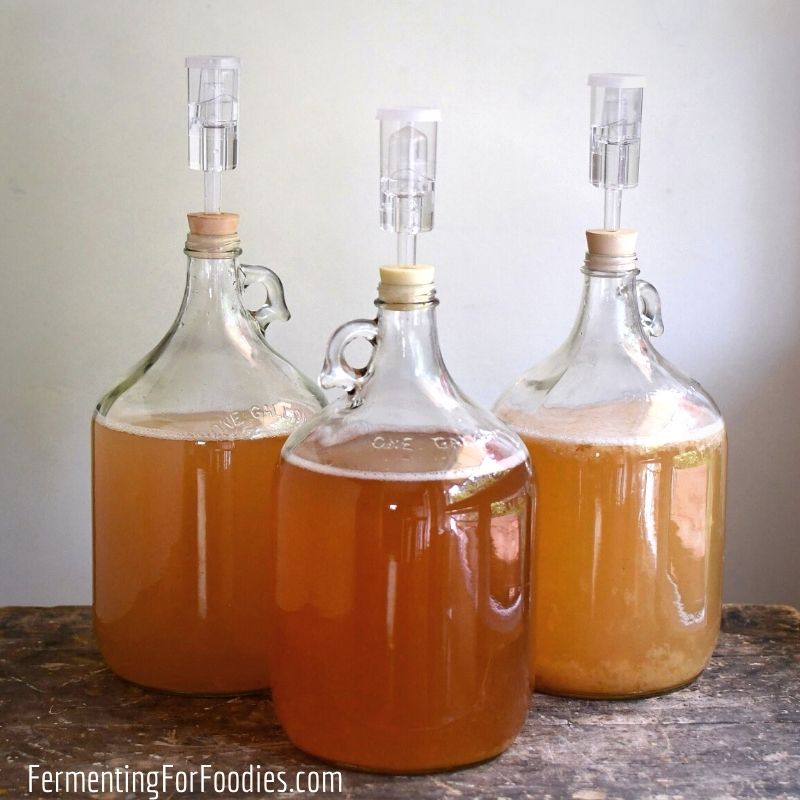
A hydrometer works by measuring the approximate alcohol level of your fermented beverage by comparing the concentration of sugar in the liquid before fermenting and after fermenting. The alcohol level is assumed by the decrease in sugar concentration.
Why Should you use a hydrometer?
Here are a few reasons why homebrewers use hydrometers.
- It measures the sugar concentration prior to fermenting. This allows you to add more sugar, if needed, to hit the level required for the recipe. This is particularly important when brewing cider and wine with whole fruit or homemade juice. Sugar levels of fruit can vary widely based on variety and ripeness.
- A hydrometer helps determine when the beverage is ready for bottling. Particularly important for hard cider, which is often bottled before all the sugar is consumed.
- It can help you determine if a ferment has stalled early. If fermentation has stopped, and there’s still plenty of sugar in the beverage, you likely need to add some yeast nutrient to kick-start it.
- It’s also nice to know the final ABV. There’s a big difference between beer that is 4% or 9% ABV!
When to use a hydrometer
The hydrometer is used to determine the final alcohol level, as well as to figure out when something is ready for bottling. Here is when to use the hydrometer:
- Beer: Beer is usually ready for a Final Gravity reading after 4 weeks in the carboy.
- Wine: I recommend testing wine when racking to a clean jug, and again when you bottle it. It can take a while for all of the sugars to be consumed in a dry wine.
- Cider: Cider is generally halted before all the sugars are used up. (Otherwise, you would end up with wine!) So test before bottling for an approximate alcohol level.
Step-by-step Guide to Using a hydrometer
Original Gravity Reading: Before Fermentation
The original gravity is the sugar concentration in your beer/wine/cider before the yeast is added. Here’s how to take an original gravity reading:
- Using a sanitized siphon, wine thief, or turkey baster, take a small sample of your beer/wine/cider right before you add the yeast.
- Transfer the liquid to a testing cylinder (one usually comes with the hydrometer). You need to use enough liquid to fully suspend the hydrometer. If the hydrometer isn’t floating then add more liquid.
- Make sure that the hydrometer isn’t touching the sidewalls of the cylinder and take the measurement from the bottom of the meniscus.
- It’s important to record the Original Gravity reading to calculate the final ABV. I have a fermentation diary that I use for all my complex ferments (beer, wine, cheese). Some people write directly on the carboy.
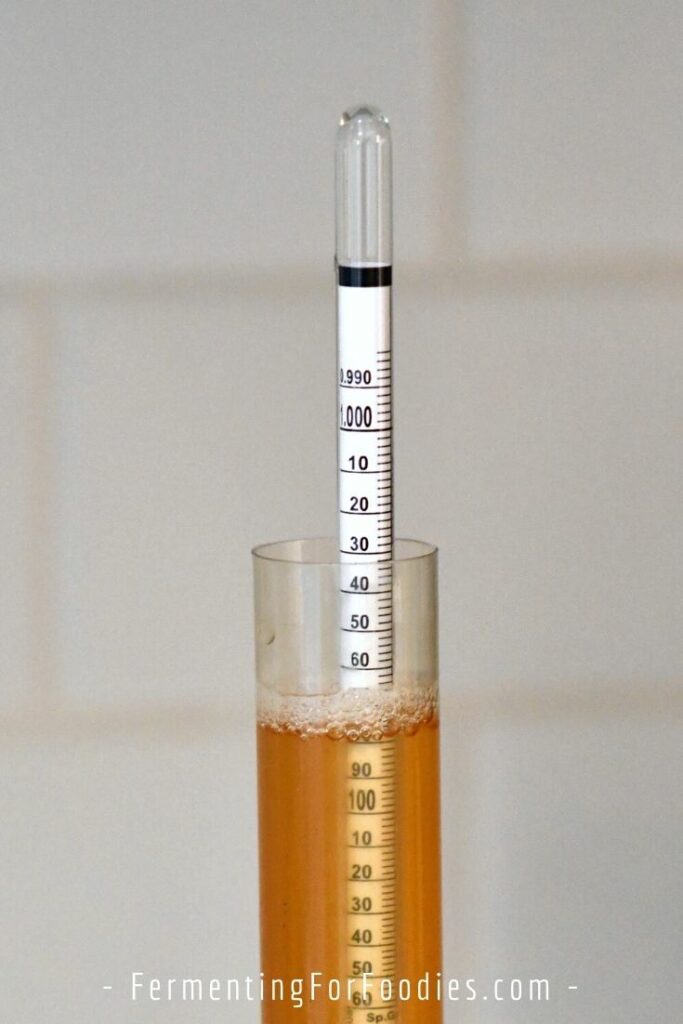
Final Gravity Reading: After Fermentation
Take a Final Gravity reading when bottling your beverage. (I often take an extra reading, when racking to a clean carboy just to test whether everything is fermenting nicely).
Here’s how to take the final gravity reading:
- Using a sanitized siphon, draw a sample.
- Pour the liquid into the testing cylinder and record the reading from the bottom of the meniscus. This second reading is the Final Gravity.
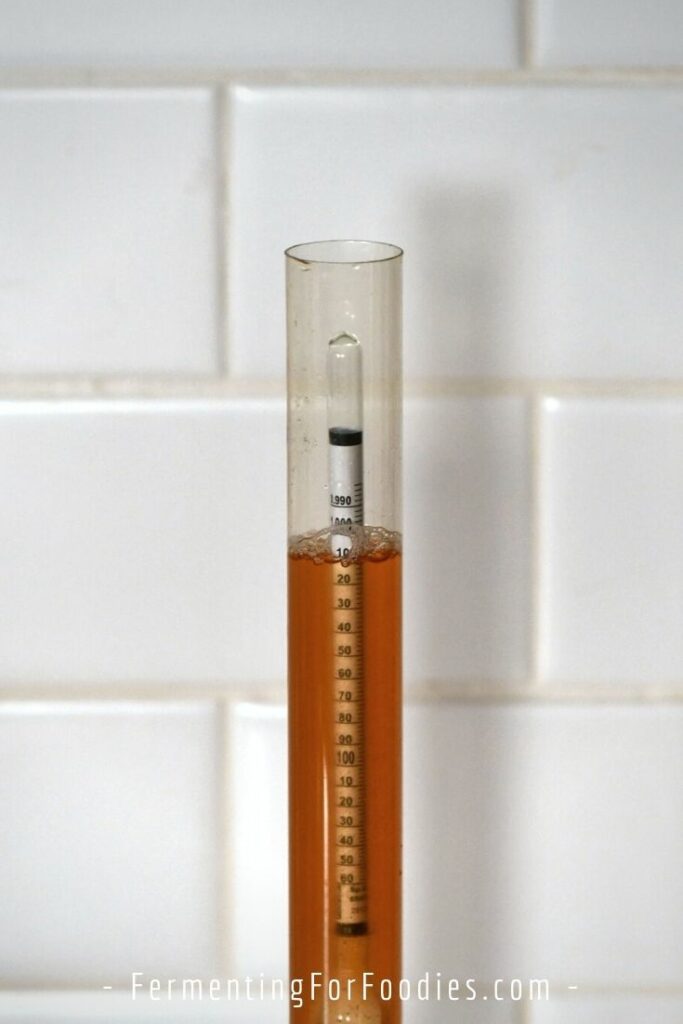
Calculating Alcohol Level
Calculate the alcohol level by converting the specific gravity reading to a potential alcohol level using a handy table. You probably got a copy of this table with your hydrometer, so don’t throw the paperwork out!
Regardless of the scale used, the calculation is pretty simple.
- Take the Original Gravity reading and look at the table to figure out the POTENTIAL alcohol level.
- Take the Final Gravity reading and look at the table to figure out the REMAINING POTENTIAL alcohol level. (It should be a smaller number, and it probably won’t be zero).
- Calculate the difference between the original potential alcohol level and the remaining potential alcohol level to find out the actual alcohol.
Using the photos above, here’s how to calculate the alcohol in my perry:
- My Original Gravity reading was 1.080, which has a potential alcohol level of 10.2% before fermentation.
- My Final Gravity reading was 1.012, which has a potential alcohol level of 1.3%.
- The actual alcohol level was 8.9% (10.2 – 1.3 = 8.9).
If math really isn’t your thing, then you can just put your Original Gravity and Final Gravity readings into this handy calculator to figure out the alcohol level.
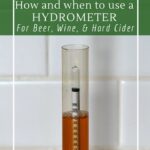
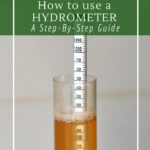
Thanks, I’m going to try this for the first time. I enjoy plume wine at my favorite sushi restaurant so I’ll try plume wine first. II will also try to make apple cider. I have two fruit producing trees in my backyard, a plume tree and a red apple tree both are ripe and falling off the limbs. Any guidance along the way would be greatly appreciated.
Hi, I have recipes for both apple cider and plum wine. My cider recipe starts with juice, so are you able to juice your apples? Regardless, the plum recipe involves whole fruit, so it’s perfect for your plums. My only advice is to avoid using any mouldy fruit. You need fresh, ripe fruit for the best flavour. Good luck!
Hi Maurice!
Hope your plum wine- and apple cider-making went well.
I dropped in to mention that Japanese plums (ume) used to make plum wine (like you had at your sushi restaurant) are quite different from European or North American plums. In fact, they are somewhat more like the apricots than the plums in my store: https://en.wikipedia.org/wiki/Prunus_mume
Furthermore, the ume are not actually fermented themselves to make Japanese plum wine! The unripe fruit are simply used as a flavoring agent for the liquor (typically shochu) they are steeped in:
https://www.winemag.com/2019/12/24/plum-wine-spirit-guide/
So the irony is that Japanese plum wine not really a wine, but more like an infusion, using a fruit that’s not really a plum but more like an apricot! Is that confusing enough? (I blame the translators, lol).
However, I bet your plum wine is tasty, even though it won’t taste very much like the “wine” served to you at that Japanese restaurant. And I’m jealous about your apple tree; if I had one myself, I’d want to see if the natural yeast present on the apple skins would be sufficient to produce a delicious cider! btw, do you have a cider press, or did you simply use a juicer?
I didn’t take a reading before I added the yeast. I will be putting the wine into carboys in a couple of days (waiting for a delivery). The plums have been in the fermenting bucket for about nine days; I added the sugar and yeast about 4 days ago. I took a reading today, (first reading). It was 1.066. Does that sound about right? I have about 12.5 lbs of plums in a 5 lb bucket, with 2.5 gallons of water, 7.5 lbs of sugar, 11 grams of ale yeast, and some lemon juice. It smells great!
That sounds about right! Your original gravity would have been a bit higher than that… (but I’m not enough of an expert to know how much higher!) So expect your wine to be a bit stronger than calculated at your final reading. Enjoy your plum wine!
I’ve siphoned the wine a few times in the past 3 weeks; from the original bucket to a large carboy, and then just recently into gallon jugs. Hydrometer readings looks like the alcohol levels are going down! But when I’ve collected some to do readings, I taste it and it tastes pretty “alcoholic”, it seems to be getting dryer tasting. (it tastes good. I don’t understand what’s going on? I had airlocks on it and no bubbling. Can it lose alcohol? Remember, I forgot to do a reading in the beginning, before I added sugar and yeast. July 29 – 1.066; August 6 – 1.028; August 20 – 1.012
Good question! Specific gravity is a measurement of potential alcohol levels. So… the current alcohol level is the difference between the original and the current level. The number will get lower as it ferments. I’m actually visiting my sister, so I don’t have my reference chart, but it looks like your wine is currently at around 6% ABV (or a bit higher because you don’t have the first reading). Enjoy!
In my last comment, I didn’t understand how to use a hydrometer! After doing some reading and watching some videos, I can see that it makes sense for the hydrometer to have lower readings, as more sugar is turned to alcohol. Since I didn’t initially take a reading before I added the yeast, I won’t really know what the exact alcohol level will be at the end; that’s ok; so far, it’s looking good and tasting great!
Great!
Might have been better to use hydrometer pictures without all of the bubbles.
Please update you amazon hydrometer link. It’s for distilled alcohol only and cannot be used for fermented beverages.
I simply followed your link and purchased, trusting your knowledge on the subject and now I cannot return it.
Sorry about that! I will double-check the link. However, the exact product that Amazon links to will depend on your country. They also automatically swap out products if it’s out of stock, discontinued, etc. It’s supposed to be like for like, but I guess they got it wrong in this case. 🙁